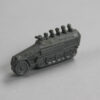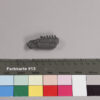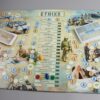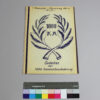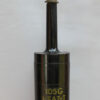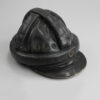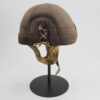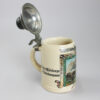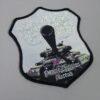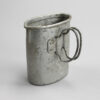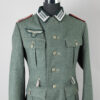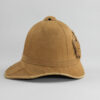Winterhilfswerk collector’s figure Sd. Motor vehicle. 251, 1941
Inventory number: DPM 7.171.1
When the National Socialists took power in 1933, there were many people in need in Germany. In September 1933, the Ministry of Propaganda founded the “Winter Relief Organization of the German People” (WHW) and entrusted the “National Socialist People’s Welfare” (NSV), an association affiliated with the NSDAP, with the task of carrying out the collection campaigns. The existing welfare and social associations had already organized joint fundraising campaigns for winter relief under the name “Winterhilfswerk” in 1931 and 1932. Only people defined as “hereditarily healthy” could receive help from the National Socialist People’s Welfare Organization. The Winterhilfswerk was less racially ideological. However, the WHW also refused to help people defined as “asocial” and “work-shy” and, from the “Nuremberg Laws” in 1935, Jews, who were also no longer allowed to donate from 1936 onwards.
The Winterhilfswerk financed its aid projects with donations. These were collected in a variety of ways. In addition to monetary donations from street collections, companies were also called upon to make donations. There was also a “wage and salary donation” of up to 10% of salary, which working people could give more or less voluntarily. There were also fundraising campaigns such as “Stew Sunday”. There was also a focus on donations in kind such as clothing, food and fuel.
The NSV activated around 1-1.5 million people per collection campaign to collect the donations. Members of the welfare associations and numerous Nazi organizations, school classes, clubs, but also the SA and SS collected the donations, sometimes using penetrating means. They not only approached people on the street, but also made house calls using lists of names and asked for donations of the minimum amount required. The frequent reminder in the propaganda and in the instructions to the fundraisers that the donation was voluntary also indicates that many people did not feel this way. In National Socialist society, people who did not behave as desired were always at risk of being subjected to repression. Donors could show their participation with donation receipts such as badges; conversely, it was also visible who had not donated.
Today, the Winterhilfswerk is still mainly known for its badges, which were sold from October 1933. These badges were often made by craftspeople typical of the region in question, such as wood carvers from the Ore Mountains or bobbin lace from Chemnitz. They were issued in varying numbers, but usually in the millions and were sold for around 20 Reichspfennig each.
There were standardized Reich badges and series, and each Gau also issued its own series. Badges were also issued for events and other occasions, which is why there were probably around 8,000 different ones in total. In order to increase the incentive to buy, the badges were designed to be as decorative as possible and featured flowers and animals, for example. Only a fraction showed military themes, such as porcelain and woven badges on historical German uniforms, helmets or weapons. This badge of the Sonderkraftfahrzeug 251 was issued in March 1941 for the “Day of the Wehrmacht”. It was part of a series of military motifs that included 12 plastic badges. They included guns with crews, ships, airplanes and horsemen. In addition to Wehrmacht soldiers, members of soldiers’ associations and the German Red Cross also collected donations at the street collections on “Wehrmacht Day” and issued these badges as donation receipts.
During the Second World War, the Winterhilfswerk was called the “Kriegswinterhilfswerk” and continued to issue new badges until March 1943. It then ceased production. In addition to the shortage of materials and personnel due to the war, the badges probably no longer functioned sufficiently as an incentive for donations from the increasingly needy population.
Object of the month
(short) stories from the depot
Unfortunately, many objects cannot currently be shown in the exhibition for conservation reasons. Here you will find unusual objects and exciting stories of special pieces from the depot



